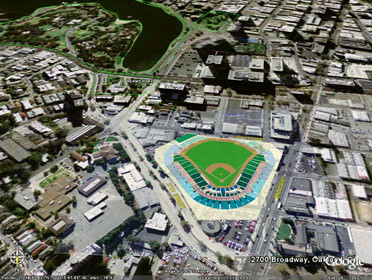- Who will be the A's television play-by-play guy(s)?
- Will Hank Greenwald return? If so, how diminished will his schedule be?
- What will happen to fill-in radio play-by-play man Steve Bitker?
Not to be lost in all of this is the news that after initial discussions, neither KQKE-960 nor KNEW-910 will broadcast the A's next season. That eliminates two more candidates from the already short list of potential radio homes for the A's. November is usually negotiation time for such matters, so we should hear more then.
Following up on initial reports in early October, the Bay Area Radio Digest confirmed that Cumulus Media is buying Susquehanna's radio properties, which include KNBR-680 and 1050.
Thanks Rob for the heads-up on the A's radio article.





